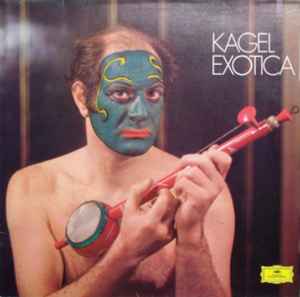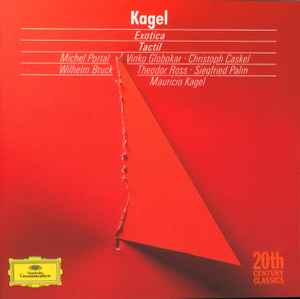Keith Rowe
Davey WilliamsJim O’Rourke
Hans Reichel
K.K. Null
Henry Kaiser
Guitar Series Vol. I
1993
Table of the Elements
Derek Bailey
Keiji Haino
Paul Panhuysen
Lee Ranaldo
Loren Mazzacane
Thurston Moore
Guitar Series Vol. II
1994
Table of the Elements [OBSOLETE TEXT]
Keith Rowe
City Music for Electric Guitar
b/w ”We Want Some Minutes, Okay?”
Table of the Elements Guitar Series Vol. I
1993
Table of the Elements
[Boron] TOE-SS-5
7” single, “matchbook” jacket, white vinyl, hand numbered, locked grooves
Davey Williams
Firing Up the Old Sikorsky b/w Requiem for Bosnia
Table of the Elements Guitar Series Vol. I
1993
Table of the Elements
[Carbon] TOE-SS-6
7” single, “matchbook” jacket, white vinyl, hand numbered
Jim O’Rourke
Muni/Michel Piccoli
Table of the Elements Guitar Series Vol. I
1993
Table of the Elements
[Nitrogen] TOE-SS-7
7” single, “matchbook” jacket, white vinyl, hand numbered
Hans Reichel
Variations on Jay
Table of the Elements Guitar Series Vol. I
1993
Table of the Elements
[Oxygen] TOE-SS-8
7” single, “matchbook” jacket, white vinyl, hand numbered
K.K. Null
Cryonics/Winter Solstice/Memes
Table of the Elements Guitar Series Vol. I
1993
Table of the Elements
[Fluorine] TOE-SS-9
7” single, “matchbook” jacket, white vinyl, hand numbered
Henry Kaiser
Delirium/Homesickness
Table of the Elements Guitar Series Vol. I
1993
Table of the Elements
[Neon] TOE-SS-10
7” single, “matchbook” jacket, white vinyl, hand numbered
Derek Bailey
New Year Messages 1 – 4
Table of the Elements Guitar Series Vol. II
1994
Table of the Elements
[Sodium] TOE-SS-11
7” single, die-cut letterpress jacket, gray vinyl, numbered
Keiji Haino
Guitar Works I – VIII
Table of the Elements Guitar Series Vol. II
1994
Table of the Elements
[Magnesium] TOE-SS-12
7” single, die-cut letterpress jacket, gray vinyl, numbered
Paul Panhuysen
The Galvanos
Table of the Elements Guitar Series Vol. II
1994
Table of the Elements
[Aluminum] TOE-SS-13
7” single, die-cut letterpress jacket, gray vinyl, numbered
Lee Ranaldo
Smoke Ring #5/ Travis 4, 5
Table of the Elements Guitar Series Vol. II
1994
Table of the Elements
[Silicon] TOE-SS-14
7” single, die-cut letterpress jacket, gray vinyl, numbered
Loren Mazzacane
Five Points
Table of the Elements Guitar Series Vol. II
1994
Table of the Elements
[Titanium] TOE-SS-15
7” single, die-cut letterpress jacket, gray vinyl, numbered
Thurston Moore
Starfield Wild b/w Earth/Amp
Table of the Elements Guitar Series Vol. II
1994
Table of the Elements
[Sulfur] TOE-SS-16
7” single, die-cut letterpress jacket, gray vinyl, numbered
As auspicious cultural moments go, this one was a little sneaky. No one really knew it was coming. Now, it looks suspiciously like something that had to happen—a cool idea, and like all cool ideas, a little ahead of its time, yet very much of its time, if you were given to wearing the right kind of wristwatch. The year was 1993—a lifetime ago in pop terms, still the very early Clinton Era, plenty of dreams yet to unwind, and the final commodification of Alternative Nation waving from the near distance—and an independent record label had just set up shop in Atlanta, Georgia. Not exactly the grand locus of avant-garde activity, but still Dixie enough to nourish a little ruckus-raising. And that, from the get-go, was the purpose of Table of the Elements—a fact announced with its very first releases, a collection of 7-inch singles which featured twelve masters of the electric guitar. Not noodlesome masters, or Southern boogie masters, or jazz-wank masters, or new-folk revival masters or any of that. This was more imaginative, more dangerous, more weird, more fun. Here, guitars were not merely played. They were also abused, cheated, lied to, exalted, obliterated, teased, tricked up, toyed with impetuously, trained to jump through flaming hoops, obliged to sit up and behave, targeted for death, elected President, taken for a reckless betting spree at the dog track, used in ways and for purposes few could possibly have imagined. It was like something out of De Sade or D.W. Griffith. If either of them had an affinity for stringed instruments, amplifiers and the act of lunging sun-drunk into the wild thickets of bliss and blister that constitute the realm of free improvised music.
No one would easily have predicted that this was a harbinger of so much to come, a quiet revolution in noisy music (or music about noise, or noise as music, or "rock-based minimalism," or post-rock, or anti-guitar, or sine waves from Planet X). Table of the Elements was the first of its kind on the block, the first American label of its era, to really root itself in a deliberate (yet playfully vague) aesthetic that embraced avant/outsider/iconoclast/overlooked genius musical stirrings while also conjuring a slyly self-conscious philosophical identity that was clearly and cleverly expressed in the way its discs were designed and packaged. There was a whiff of conspiracy about them, a mystique of sorts, that implied a Dispatch from Someplace Else. It's the type of record label that Thomas Pynchon or Don DeLillo might dream up, as a way to give face to the fact that the world we think we know—the histories they tell us we should accept—is only parallel to many other worlds, each containing other histories. That which appears to be a recondite hymn in one could easily be the populist anthem in another, and Table of the Elements arose on the premise of flipping that script. But with a fine degree of subtlety, elegance even. These releases were curatorial. Like individual pieces of a larger-scale art project, one whose fuller, lasting image would reflect variations on the notion of what music should do (after Cage or after Hendrix or after Ayler), particularly in the hands of performers so peculiarly individualistic that it's hard to imagine all of them fitting comfortably under any umbrella, let alone sharing one.
The Guitar Series was the square root of what has become one of the most impressive and daring catalogs going. It's a road map, in a sense, not only towards the label's subsequent triumphs and gambits, but also of much that would come to greater prominence in the nearly 10 years since its first releases. At the time, the notion of inviting a perversely eclectic array of improvising guitar heroes (some legendary, some unknown) to record for 7-inch vinyl—a genuine, jukebox-friendly single—and not make a full-length CD, was offbeat. Capricious, even. On one hand, there was yet no Vinyl Renaissance in effect. On the other, how subversively tweaky indeed was any gesture that consigned such frequently gnarly, square-peg eruptions to the ultimate in disposably round-hole pop formats, the 45 rpm (or, occasionally here, 33 rpm) record. Was this the arcana, to paraphrase Claes Oldenberg, that helped budding hipsters get across the street?
bIt proved to be a great dinner party, one whose guest list sparked with unexpected chemistry. Like the Algonquin Round Table, argued with Orange amplifiers. Volume One boasted British table-top guitar pioneer Keith Rowe (of AMM fame), the very model of the postmodern-day avant-garde heavyweight, and Henry Kaiser, a slide-guitar master adept at recreations of Pacific island musics whose travels far and wide had made him a true cult figure; from Japan, the monstrous noise icon Kaziyuki K. Null, making an extremely rare appearance on a U.S. label, and from Alabama, the unjustifiably obscure improviser Davey Williams, a marvelously wicked player who has done much to strip away pretense from the façade of "the scene" with his irreverent Southern sensibility. Germany's Hans Reichel weighs in, a radical innovator from the early 70s' First Wave of free improvisation; and here, also, is Jim O'Rourke, truly a household name these days thanks to his prolific work as a producer, peripatetic collaborator and singer-songwriter, although the Guitar Series single was then only his second solo U.S. release—pre- Gastr del Sol, pre- Sonic Youth, pre- Wilco, pre- Ubiquity, pre- Et Cetera. Quite a prescient call.
Volume Two of the series (assembled at the same time as Volume One and released a few months later—April 23, 1994, to be precise, at the label's near-mythic Manganese Festival) was equally visionary. Derek Bailey, another legend whose pathbreaking procedures utterly reinvented guitar language, shows up in a surprisingly whimsical mood, putting the lie to the cliché that all improv must be dry and high-falutin'. Sonic Youth's Lee Ranaldo and Thurston Moore also make their presence felt, lending their downtown NYC seal of approval to the project-at-large, and indulging in the kind of mischievous clamor they've made an enduring stock-in-trade. Another New Yorker, melancholic mood-scaper Loren Mazzacane (later known by the appended surname Connors) offers his distinctively low-key sonic imprint, one that would come to wider appreciation in the years to come. Paul Panhuysen, interpreter of "long string" instumental installations, forecast his future full-length ToTE release. And, in one of those artistic coups that can justify such an exhaustive effort on its own terms alone, the magnificent Keiji Haino makes his U.S. recording debut, certifying for neophytes and addicts alike the vengeful grace of extremely amplified guitar—one roaring with the mystery of a man who fell to Earth, only to hijack its strangest frequencies.
bTaken individually, these recordings offer fascinating asides and insights into the creative process of some of the most original musical thinkers of the 20th century, post-Elvis division. Each performance is like a phrase of audible graffiti, an instance of working-out that can either be heard as a response to a novel proposal—record a "single"—or the seizure of a moment in which radical style is given imperious free rein: an E-ticket ride in the Six Flags of Sound. That, in and of itself, is remarkable. But heard as a cumulative shockwave of amplified ingenuity, these short pieces suggest something more, well, elemental. Beneath the surface noise of contemporary culture, the lockstep groove of technology and advertising, the jittery pulse of global anxiety and the new world disorder, there is something unabashedly liberating about cranking the volume behind some deviant fretnoise. Electric guitar, as someone once said, is the enemy of the state. Long live the revolution.
Steve Dollar
New York City
April, 2002




















